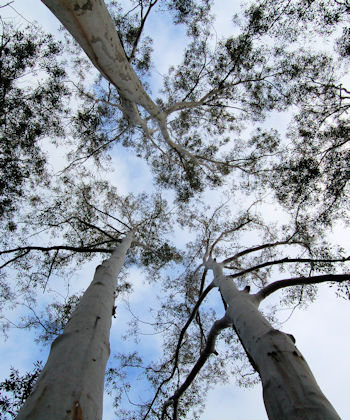Botanical names and common names

In general, timber workers who handle processed timber tend to use common names to identify the different species. This is because most customers prefer to talk in common names, and at any rate, it’s much easier to remember a name like ‘Sydney blue gum’ than it is to memorise the Latin-based botanical term, which in this case is Eucalyptus saligna.
However, there are some timber industry jobs where it’s important for people to know the correct botanical name (or ‘scientific name’) for the tree species they’re working with, particularly in the forestry and harvesting sectors.
The main reason for using botanical names rather than common names to identify particular trees is that there is an international taxonomic (‘naming’) standard for all known species. This allows taxonomists around the world to agree on a single scientific name for each individual species. For tree workers, it means that when you refer to a tree by its scientific name, everyone will know exactly which species you’re talking about.
By contrast, there is no universal standard for common names, which means that different species in different localities could share the same common name. For example, Eucalyptus saligna, is often simply called ‘blue gum’, especially when it’s growing in areas outside of the Sydney region. But the term ‘blue gum’ can also refer to various other eucalypt species, including E. pseudoglobulus (Gippsland blue gum), E. leucoxylon (Inland blue gum) and E. globulus (Tasmanian blue gum).
A second reason for being able to identify trees by their scientific names is that the ‘genus’ helps to establish the tree’s relationship to other species in the same category. For example, E. saligna is a member of the eucalypt genus, which explains why its features look so similar to many other eucalypts (or ‘gum trees’).
Note that taxonomic classifications can change over time as more scientific information is gained. The most prominent example of this in recent years was the creation of the new genus Corymbia in the 1990s. Not all botanists agreed with the change when it was first introduced, since it involved the reclassification of several well-known gum trees, such as spotted gum (previously E. maculate, now C. maculate) and red flowering gum (previously E. ficifolia, now C. ficifolia).
However, the reclassification is now generally accepted, even though these gum trees are still considered to be ‘eucalypts’. In fact, the collective term ‘eucalypt’ now comprises three closely-related genera – Eucalyptus, Corymbia and Angophora.